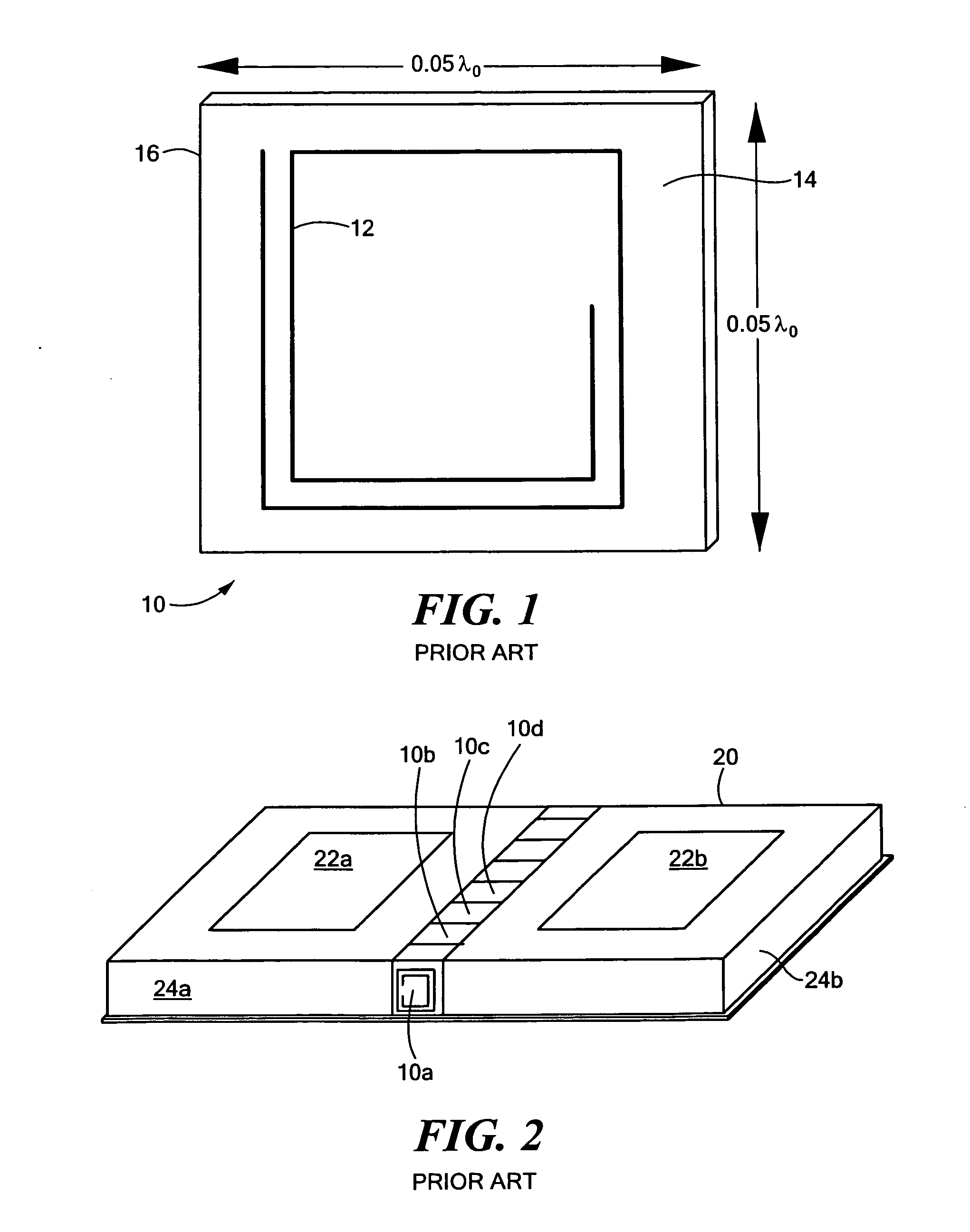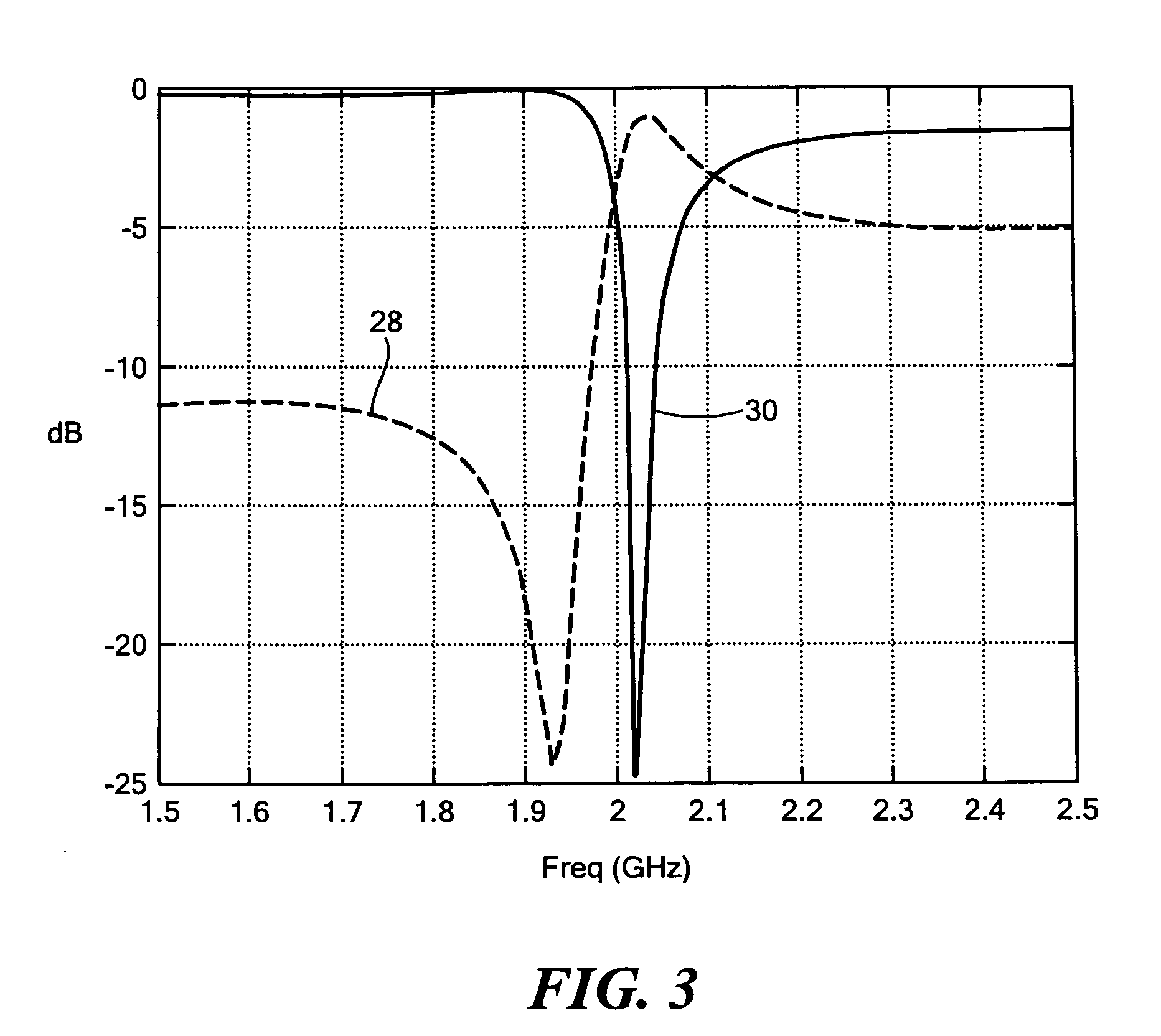Multilayer metamaterial isolator
a metamaterial and isolator technology, applied in the field of isolating technology, microwave antenna arrays, and metamaterial isolators, can solve the problems of significant performance degradation, heat management, signal routing complexity, radiation pattern distortion and scan blindness, and achieve the effect of reducing cross-talk
- Summary
- Abstract
- Description
- Claims
- Application Information
AI Technical Summary
Benefits of technology
Problems solved by technology
Method used
Image
Examples
Embodiment Construction
[0043]Aside from the preferred embodiment or embodiments disclosed below, this invention is capable of other embodiments and of being practiced or being carried out in various ways. Thus, it is to be understood that the invention is not limited in its application to the details of construction and the arrangements of components set forth in the following description or illustrated in the drawings. If only one embodiment is described herein, the claims hereof are not to be limited to that embodiment. Moreover, the claims hereof are not to be read restrictively unless there is clear and convincing evidence manifesting a certain exclusion, restriction, or disclaimer.
[0044]FIG. 1 shows a unit cell isolator 10 as discussed in Buell et al., “Metamaterial Insulator Enabled Superdirective Array,” IEEE Transactions on Antennas and Propagation, Vol. 55, No. 4 (April 2007). Metallic trace 12 is formed on face 14 of dielectric substrate 16. Thus, the trace is confined to one plane. As shown in ...
PUM
| Property | Measurement | Unit |
|---|---|---|
| unit cells | aaaaa | aaaaa |
| size | aaaaa | aaaaa |
| separation distance | aaaaa | aaaaa |
Abstract
Description
Claims
Application Information
 Login to View More
Login to View More - R&D
- Intellectual Property
- Life Sciences
- Materials
- Tech Scout
- Unparalleled Data Quality
- Higher Quality Content
- 60% Fewer Hallucinations
Browse by: Latest US Patents, China's latest patents, Technical Efficacy Thesaurus, Application Domain, Technology Topic, Popular Technical Reports.
© 2025 PatSnap. All rights reserved.Legal|Privacy policy|Modern Slavery Act Transparency Statement|Sitemap|About US| Contact US: help@patsnap.com



